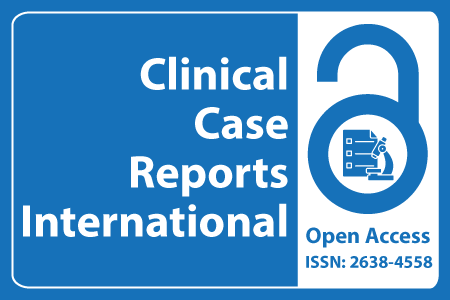
Journal Basic Info
- Impact Factor: 0.285**
- H-Index: 6
- ISSN: 2638-4558
- DOI: 10.25107/2638-4558
Major Scope
- Gastroenterology
- Cardiology
- Child Birth
- Signs and Symptoms-Clinical Findings
- Surgical
- Forensic and Legal Medicine
- Preventive Medicine
- Inflammation
Abstract
Citation: Clin Case Rep Int. 2023;7(1):1541.DOI: 10.25107/2638-4558.1541
Brief Outline of Ectopic Pregnancy
Shilpy S and Praveen A
Department of Biotechnology & Microbiology, School of Sciences, Noida International University, India
*Correspondance to: Afsana Praveen
PDF Full Text Review Article | Open Access
Abstract:
Fetal tissue implanting outside of the uterus or attaching to an aberrant or scarred area of the uterus results in an ectopic pregnancy. The fallopian tube is the most frequent location for ectopic pregnancy. Without early detection and treatment, ectopic pregnancies have significant rates of morbidity and fatality. Abdominal discomfort, vaginal bleeding, or more ambiguous problems like nausea and vomiting can all be signs of ectopic pregnancy. Smoking, Chlamydia trachomatis infection, tubal surgery, endometriosis, and Pelvic Inflammatory Disease (PID) are all established risk factors that are specific to women. Progesterone measurement, Transvaginal Ultrasound Scan (TVS), and serum β-HCG levels are the primary diagnostic indicators of EP. Most early-detected tubal ectopic pregnancy cases can be effectively treated with either minimally invasive surgery or with methotrexate as a non-surgical option. Ectopic pregnancy in a patient who is unstable, however, is a medical emergency that necessitates quick surgical intervention. EP can be treated surgically by laparotomy or laparoscopy, medically through a systemic or local approach, or with expectant therapy. The purpose of this review on the current understanding of the etiology, examining the diagnosis, treatment and management of ectopic pregnancy that are compatible with the greatest available scientific information.
Keywords:
Ectopic pregnancy; β-HCG; TVS; Methotrexate; Laparotomy; Abdominal pain; Laparoscopy
Cite the Article:
Shilpy S, Praveen A. Brief Outline of Ectopic Pregnancy. Clin Case Rep Int. 2023; 7: 1541.













